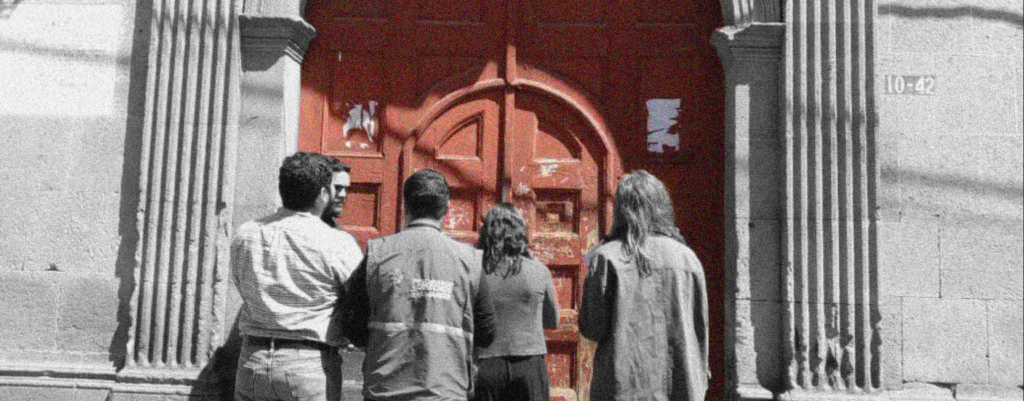The Quetzaltenango women’s prison in Guatemala: A microcosm of the problems in female detention centres
A large number of women deprived of their liberty with their children, in a small space with terrible infrastructure. This phrase encapsulates the conditions of a women’s prison located in Quetzaltenango, Guatemala, which was monitored in February 2020 by members of the OMCT, UDEFEGUA and the International Platform against Impunity during a visit in which I was able to take part.

In this text, I consider this institution as a kind of metonymy regarding the detention conditions for women in various countries around the world and I reflect on how rights violations —which in general are already a feature of institutional routines in women’s prisons— could worsen during the Covid-19 pandemic.
Adopting this focus for the discussion is important because, broadly speaking, when we talk about prisons, the first image that usually springs to mind is one of imprisoned men. As a result of the social construction of women as “sweet-natured”, and therefore incapable of being involved in criminal activities, we rarely imagine women deprived of their liberty. However, the statistics contradict this perception. Among the countries with the highest rates of imprisonment between 2000 and 2016, the U.S. saw a rise of 18% in female imprisonment, compared with a rise of 105% in China and a staggering increase of 455% in Brazil. Women are increasingly the focus of criminal justice, and this is why public policies must be developed with them in mind.
Regrettably, few actions aimed at this group exist, and when they do exist, they tend to be related to maternity. It is not that this problem is insignificant; there are many rights violations regarding the treatment of pregnant women and newborns in prisons. During our visit, for instance, it was possible to observe female inmates and their children living in torturous conditions in Quetzaltenango, without medical care or access to personal provisions such as hygiene products. During the Covid-19 pandemic, these women could experience difficulties accessing the basic means of avoiding the risks of infection, such as soap and water.
Nevertheless, restricting gender actions to pregnant or breastfeeding women is to ignore the broader aspects of the issue. Many women’s prisons are often simple adaptations of former men’s prisons or of old, run-down public buildings. In this regard, in addition to the inadequate infrastructure, some walls, roofs and floors of the Quetzaltenango prison were observed to be close to collapse. There is a risk of the facilities falling down, endangering the lives and physical integrity of the women who inhabit the space.
"The capacity of the Quetzaltenango facilities is intended for 50 inmates yet, as of February 2020, 159 women and 13 children were imprisoned there."
Women’s prisons are normally fewer in number compared with male institutions, as the female prison population tends to represent a small part of inmates as a whole (although as I have mentioned, the rates have increased in recent years). It is therefore not uncommon for the institutions designed for this group to be overcrowded. The capacity of the Quetzaltenango facilities is intended for 50 inmates yet, as of February 2020, 159 women and 13 children were imprisoned there. In the context of Covid-19, this situation of overcrowding prevents the adoption of the necessary isolation measures in case of suspected infection.
Another important factor is the lack of job or study opportunities, something repeated in prisons the world over. People deprived of their liberty tend to remain idle for a large part of their detention period, a problem that is even more widespread in female institutions such as Quetzaltenango. When work alternatives exist, they are steeped in traditional gender roles, and women are commonly assigned tasks such as cooking, sewing and cleaning prison environments. In some cases, courses are held to teach activities of personal care and beauty, such as manicures and hair styling. In other words, women’s prisons replicate the social inequalities typical of the “free world”, which require women to learn caregiving functions. After completing their sentence, these women are expected to behave submissively, far from the “world of crime” and close to the “private world” of the home[1].
In this regard, research[2] into the dynamics of female criminality indicates that women tend to be doubly penalized when they commit a crime. On one hand there is the ruling of the criminal justice system, establishing the sentence of imprisonment. On the other hand, a social sanction is imposed as a consequence of their not satisfying the expectations of society regarding how they are supposed to behave as women. Men, not women, are normally expected to break the law. It therefore comes as no surprise that female inmates receive few visits from their families during their period of detention, whereas men tend to have broad emotional support.
Given the poor conditions of the prisons of many countries, and in the absence of family visits (generally the way in which personal hygiene items and food are received), women are reliant on the solidarity of their fellow inmates. This scenario is exacerbated by Covid-19, as visits have been prohibited in many places during the pandemic. However, there is no shortage of prisons across the world — such as that of Quetzaltenango — where inmates lay down strict rules of coexistence, applying illegal penalties that can range from a warning to death. Relationships of hierarchy and power are created and compounded in a context of scarce contact with the outside world and high dependency among inmates.
Taking up the initial idea of this text, it is not an exaggeration to suggest that the Guatemalan prison monitored is a microcosm of the shortcomings that are commonly found in women’s detention centers in countries that develop few or no policies for female inmates. Concerned about the pandemic context which, as I have said, could aggravate some of the problems mentioned herein, the UN and other international organisations have made urgent calls for States to take measures to prevent the virus from wreaking even more havoc among those deprived of their liberty, such as reducing overcrowding rates. These requirements do nothing more than reinforce norms that should have been respected long ago, such as the United Nations Rules for the Treatment of Women Prisoners and Non-custodial Measures for Women Offenders (the Bangkok Rules) and the United Nations Standard Minimum Rules for the Treatment of Prisoners (the Nelson Mandela Rules), with the former being aimed at women in particular.
If this were the case, many of the problems and challenges discussed in this blog post – which only worsened during the Covid-19 pandemic - would not be a reality in the Quetzaltenango women’s prison, nor in other women’s prison institutions.
Guatemala was reviewed by the Committee against Torture (CAT) in December 2018. The concluding observations can be found here. OMCT accompanied Guatemalan civil society organisations in the presentation of shadow reports. A follow-up visit to Guatemala was carried out in February 2020 to analyse the implementation of the CAT's recommendations, accompanied by sociologist Thais Lemos Duarte.

*Thais Lemos Duarte is a sociologist and researcher from the Centro de Estudos de Criminalidade e Segurança Pública (CRISP/UFMG) and a former member of Brazil’s National Torture Prevention Mechanism. She accompanied the OMCT as an expert during a February 2020 mission to monitor the recommendations made to the Guatemalan State by the Committee Against Torture.
[1] DAVIS, Angela. Como o gênero estrutura o sistema prisional. In: Estarão as prisões obsoletas? Rio de Janeiro: DIFEL, 2018 (p. 65-89).
[2] LEMGRUBER, Julita. Cemitério dos vivos: análise sociológica de uma prisão de mulheres. 2.ª ed., Rio de Janeiro: Forense, 1999.